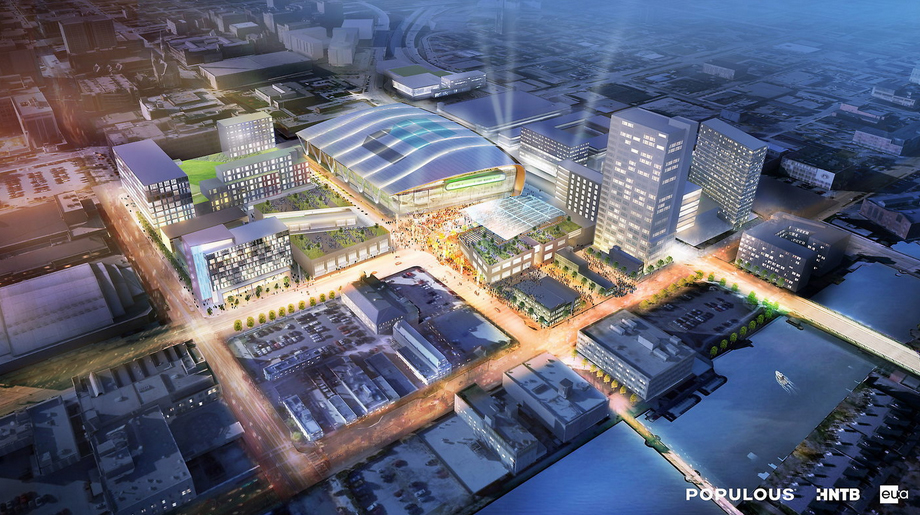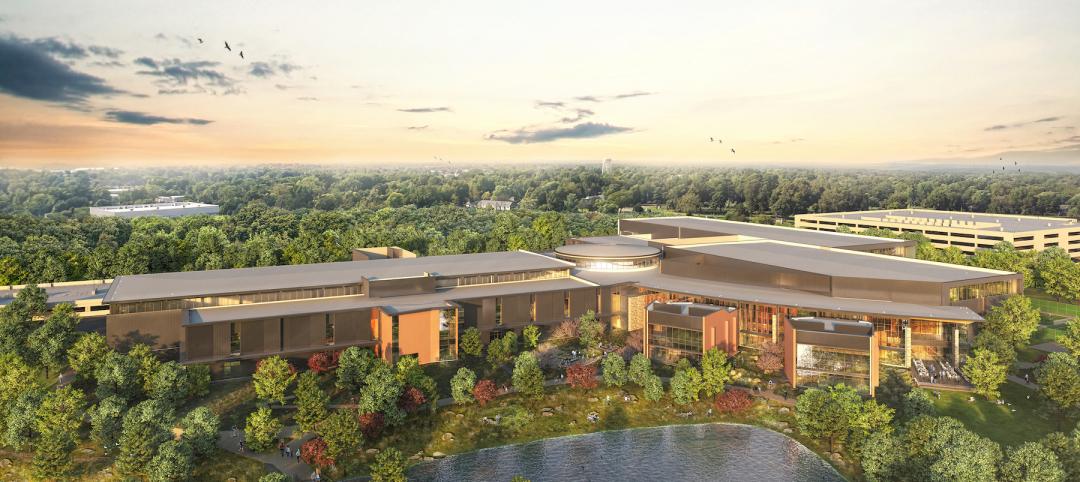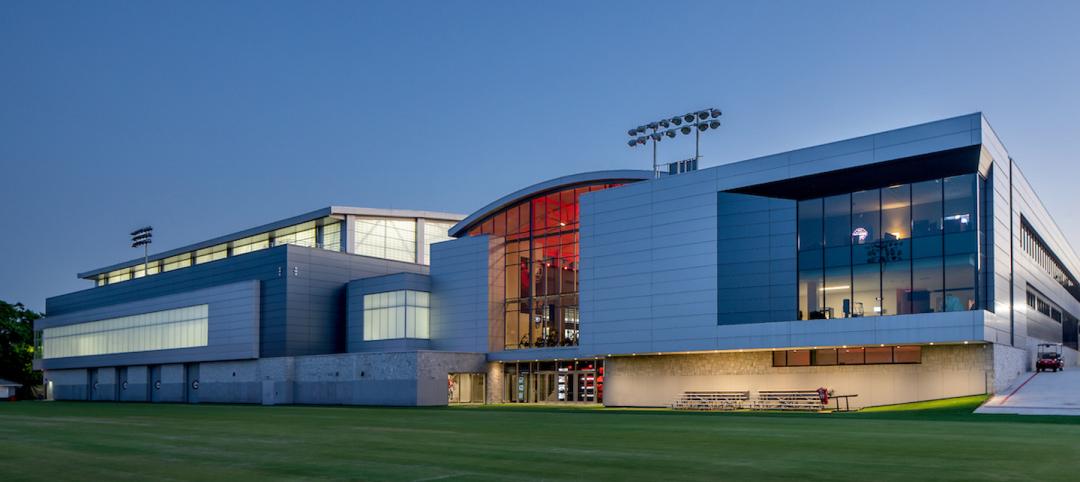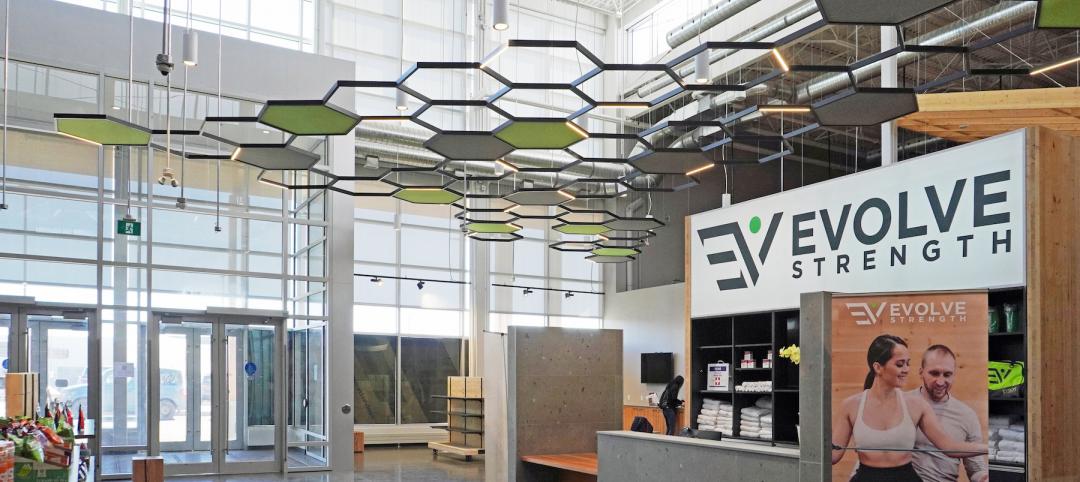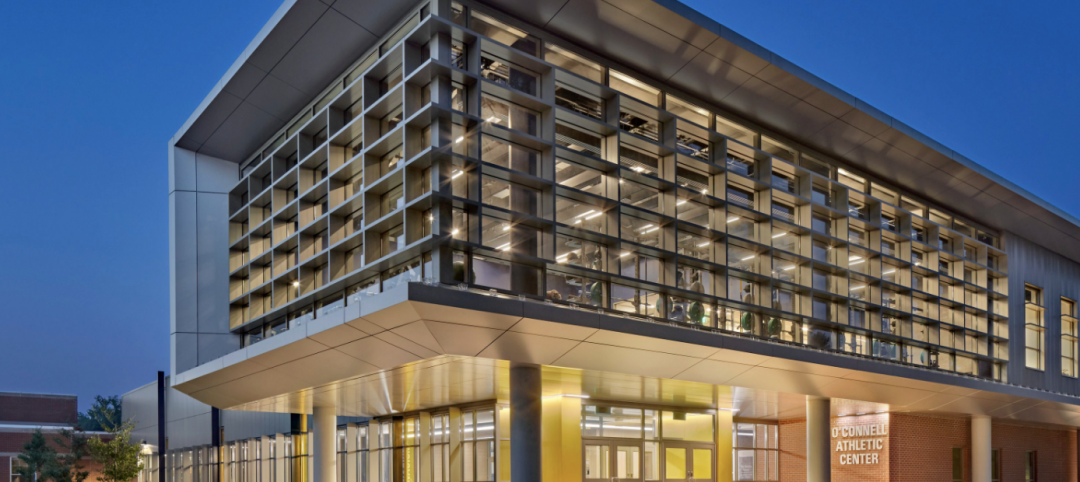The Milwaukee Bucks are one step closer to remaining in Wisconsin after the state voted this week in favor of spending $250 million in public funds on a new arena, according to ESPN.
BD+C has covered the proposed arena. Created by Milwaukee firm Eppstein Uhen Architects and global firm Populous, the venue will be built in downtown Milwaukee. Its design draws inspiration from both Lake Michigan, which borders Milwaukee, and from aspects of basketball, like high-arcing free throws. It is estimated to cost $500 million.
Funding a new arena has been an issue for the small market NBA team. Billionaires Wesley Edens and Marc Lasry purchased the Bucks in 2014 with the vow of keeping the team in the city. The NBA, however, said that the Bucks would need a new arena plan in place by 2017. Without a deal, the league would buy back the team and re-sell it, possibly to owners who would relocate it to either Seattle or Las Vegas.
Residents that opposed the arena plan cited the problems that arise when the government financially supports private sports entities, and referenced Miller Park. The Milwaukee Brewers' retractable roof stadium was publicly funded. Built in the late 1990s, it is still being paid off today.
The upside to a new arena is that the state still gets to recieve income tax from players and staff, and that the venue could bring new development, like entertainment and commercial spaces, residential buildings and parking facilities, to the area around the stadium. Most importantly, the state gets to keep the franchise that won the 1971 NBA Finals and currently has up-and-coming players like Jabari Parker and Giannis Antetokounmpo (and head coach Jason Kidd) on the roster.
The bill now heads to Governor Scott Walker for his signature. Walker has been working with state officials to reach a deal and is expected to sign it.
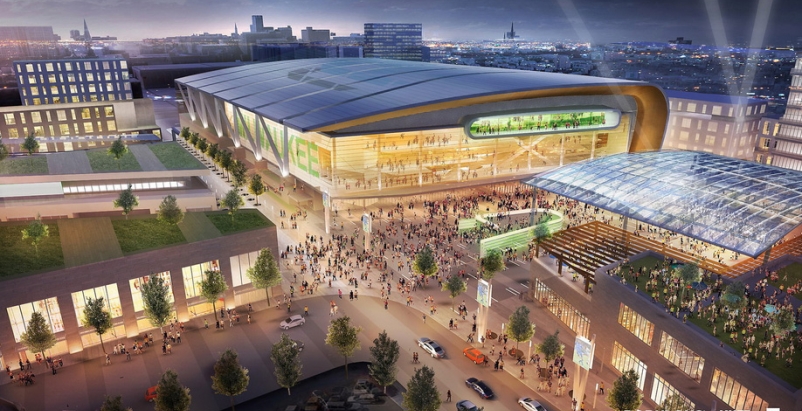
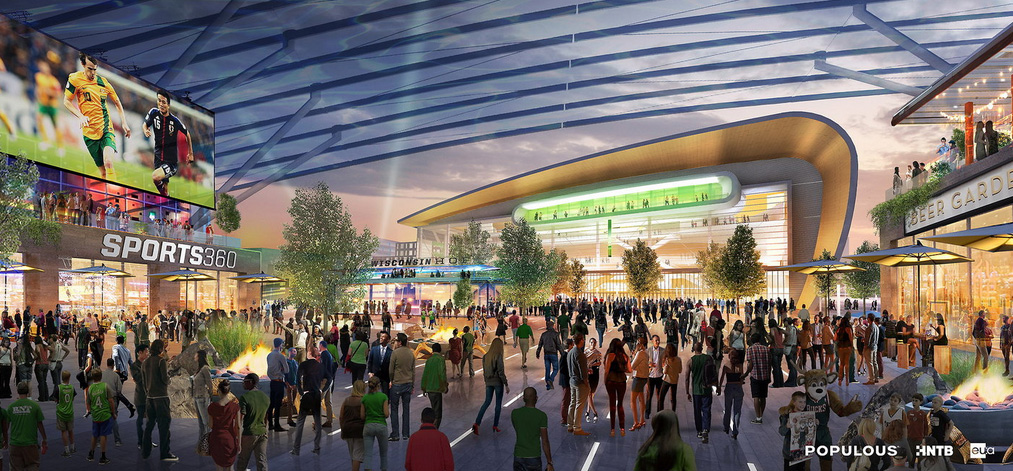
Related Stories
Multifamily Housing | Aug 3, 2022
7 tips for designing fitness studios in multifamily housing developments
Cortland’s Karl Smith, aka “Dr Fitness,” offers advice on how to design and operate new and renovated gyms in apartment communities.
Reconstruction & Renovation | Aug 3, 2022
Chicago proposes three options for Soldier Field renovation including domed stadium
The City of Chicago recently announced design concepts for renovations to Soldier Field, the home of the NFL’s Chicago Bears.
Headquarters | Jun 21, 2022
Walmart combines fitness and wellness in associates’ center that’s part of its new Home Office plan
Duda | Paine’s design leads visitors on a “journey.”
Sports and Recreational Facilities | Jun 17, 2022
U. of Georgia football facility expansion provides three floors for high-performance training
A major expansion of the University of Georgia’s football training facility has been completed.
Building Team | Jun 14, 2022
Thinking beyond the stadium: the future of district development
Traditional sports and entertainment venues are fading as teams and entertainment entities strive to move toward more diversified entertainment districts.
Acoustic Panels | Jun 9, 2022
A fitness center renovation in Calgary focuses on tamping the building’s sound and vibration
Bold Interior Design chose as its solution a lighting/acoustical panel combination.
Sports and Recreational Facilities | May 26, 2022
WNBA practice facility will offer training opportunities for female athletes and youth
The Seattle Storm’s Center for Basketball Performance will feature amenities for community youth, including basketball courts, a nutrition center, and strength and conditioning training spaces.
Sports and Recreational Facilities | May 19, 2022
Northern Arizona University opens a new training center for its student athletes
In Flagstaff, Ariz. Northern Arizona University (NAU) has opened its new Student-Athlete High Performance Center.
University Buildings | May 9, 2022
An athletic center accentuates a college’s transformation
Modern design and a student health center distinguish the new addition at The University of Saint Joseph in Connecticut.
Sponsored | BD+C University Course | May 3, 2022
For glass openings, how big is too big?
Advances in glazing materials and glass building systems offer a seemingly unlimited horizon for not only glass performance, but also for the size and extent of these light, transparent forms. Both for enclosures and for indoor environments, novel products and assemblies allow for more glass and less opaque structure—often in places that previously limited their use.


